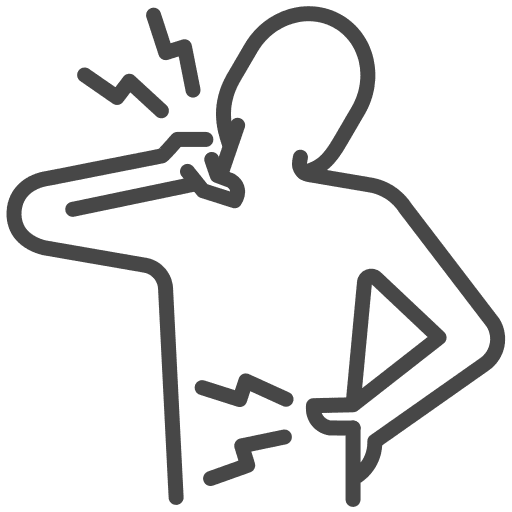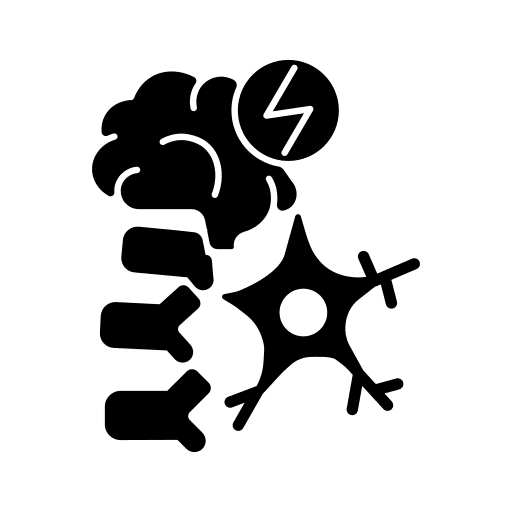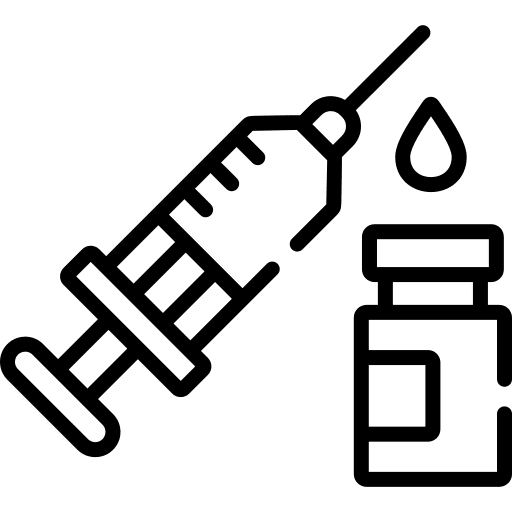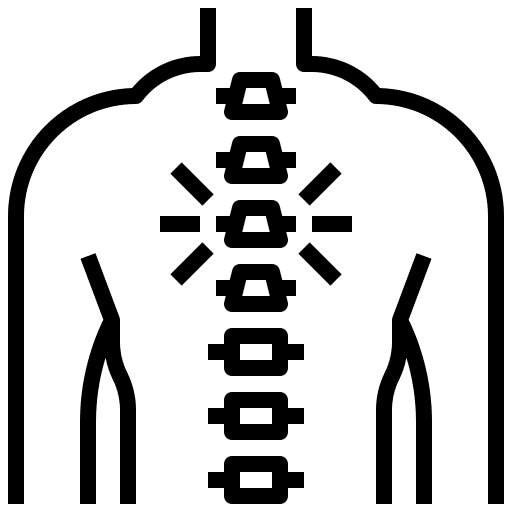Diagnostic & Therapeutic Injections
Targeted Pain Relief in the Mid-South
If you’re struggling with chronic back, neck, or joint pain, injections may be the right fit for you. At Midsouth Pain Treatment Center, we offer this minimally invasive procedure to help reduce inflammation, relieve nerve pain, and improve your quality of life – without surgery.
With convenient clinic and surgery center locations in Cordova, TN, Jackson, TN, Oxford, MS, Tupelo, MS, Southaven, MS, and Germantown, TN, we’re proud to serve communities across the Mid-South region.
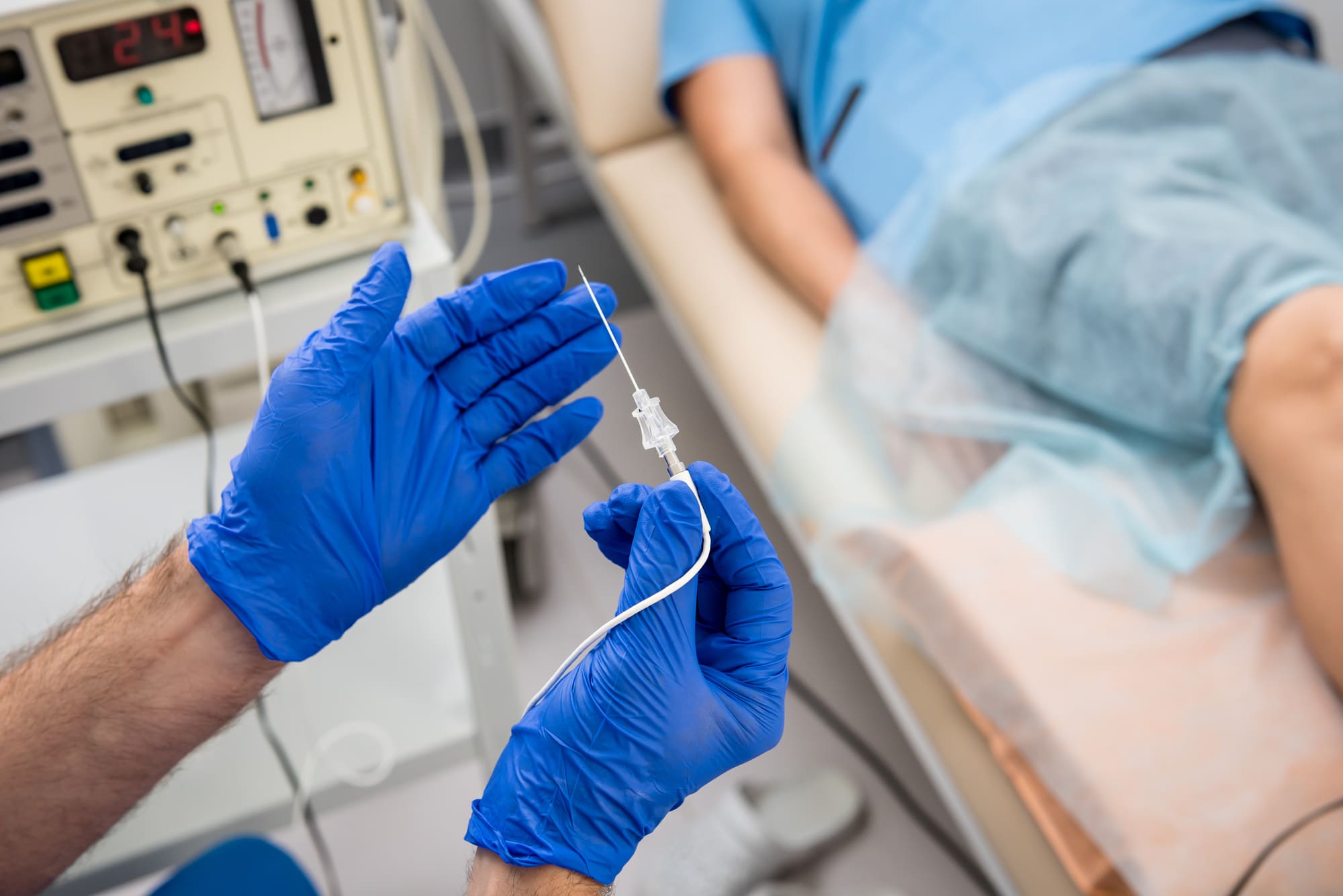
What Are Injections?
Injections are a proven interventional pain management treatment to relieve back pain from conditions that cause inflammation and pressure on the nerves or joints in your back or neck. Injections can be used for therapeutic purposes to reduce inflammation or block signals, as well as diagnostic purposes to pinpoint the exact cause of your pain to build a treatment plan that will deliver long-term relief.
During injections, your doctor performs a targeted injection with a powerful anti-inflammatory medication, and sometimes a numbing medication, directly into the source of your pain. This reduces inflammation and irritation or blocks the pain signal to provide relief.

Injections are commonly used to diagnose or treat pain from conditions like:
- General Low Back Pain or Spine Degeneration (Spondylosis)
- Chronic Neck or Mid-Back Pain
- General Low Back Pain or Spine Degeneration (Spondylosis)
- Nerve Pain Radiating from the Spine (Sciatica)
- Narrowing of the Spine (Spinal Stenosis)
- Herniated Discs
- Degenerative Disc Disease
- Failed Back Surgery Syndrome
- Nerve Root Irritation
- Arthritis
- Whiplash or Spinal Injury-Related Pain
- Inflammation of the SI Joint (Sacroiliitis)
Our Treatment Offering
We treat all types of back and spine pain. Below are some common conditions that irritate the back and spine:
Epidural Steroid Injections
Epidural steroid injections are an effective treatment option for reducing back and neck pain caused by nerve inflammation or compression. In this minimally invasive procedure, a physician carefully delivers an anti-inflammatory medication, sometimes combined with a local anesthetic, into the epidural space surrounding the spinal nerves. The steroid helps decrease swelling and irritation, easing pressure on the nerves and allowing for improved comfort and mobility.
The procedure is performed under fluoroscopy (real-time X-ray imaging) to ensure precise and targeted placement of the medication. The physician will first numb the injection site with a local anesthetic before injecting the anti-inflammatory medication. The procedure takes about 15 minutes and most patients report little to no discomfort.
Minimal recovery time with most patients returning to light activity the same day. Relief may begin within a few days and can last weeks to several months.
Epidural Steroid Injections
Caudal Steroid Injection
Caudal steroid injections are a specialized form of pain management used to treat lower back and leg pain caused by nerve irritation or inflammation. In this procedure, a physician administers an anti-inflammatory medication, often combined with a numbing agent, into the epidural space through the sacral opening at the base of the spine. The steroid works to reduce swelling and irritation around the affected nerves, helping to relieve pressure, decrease pain, and improve mobility.
During a caudal steroid injection, you’ll be positioned comfortably on your stomach while the skin near the base of your spine is cleaned and numbed with a local anesthetic. Using X-ray guidance (fluoroscopy), the physician carefully inserts a thin needle into the sacral opening and delivers the steroid medication into the epidural space. The entire procedure typically takes less than 30 minutes, and most patients go home the same day. Some may feel immediate relief from the numbing medicine, while the steroid takes a few days to reduce inflammation and improve pain.
Recovery from a caudal steroid injection is usually quick. Most patients resume light activities the same day but should avoid strenuous exercise for 24 hours. Mild soreness at the injection site is common and typically fades within a day or two. Pain relief may take a few days to appear and can last for weeks or months.
Caudal Steroid Injections
Celiac Plexus Block
A celiac plexus block is a pain management procedure used to relieve abdominal pain, often from conditions such as chronic pancreatitis or cancer. During the procedure, a physician injects a numbing medication, and sometimes a steroid, around the celiac plexus, a group of nerves located in the upper abdomen near the spine. By blocking the nerve signals that carry pain from the abdomen, this treatment can provide significant relief and improve quality of life.
During a celiac plexus block, you’ll lie on your stomach while the skin on your back is cleaned and numbed. Using X-ray or CT guidance, the physician carefully inserts a thin needle near the spine and delivers the medication around the celiac plexus nerves. The procedure usually takes less than an hour, and most patients go home the same day. Some people feel immediate relief from the numbing medicine, while longer-lasting effects may take a few days.
Recovery after a celiac plexus block is usually brief. Most patients return to normal activities within a day, though it’s best to avoid strenuous exercise for 24 hours. Some temporary soreness or abdominal discomfort may occur but typically fades quickly. Pain relief can begin right away or within a few days, and results may last for weeks to months.
Celiac Plexus Block
Cervical Steroid Injection
Cervical steroid injections are a pain management treatment used to relieve neck, shoulder, and arm pain caused by irritated or compressed nerves in the cervical spine. In this procedure, a physician injects an anti-inflammatory medication, sometimes combined with a numbing agent, into the epidural space around the spinal nerves in the neck. The steroid works to reduce swelling and irritation, easing pressure on the nerves and helping to improve pain and mobility.
During a cervical steroid injection, you’ll lie on your stomach or back while the skin on your neck is cleaned and numbed with a local anesthetic. Using X-ray guidance, the physician carefully places a thin needle into the epidural space and injects the steroid medication, sometimes combined with a numbing agent. The procedure usually takes less than 30 minutes, and most patients are able to go home the same day. Some may notice immediate relief from the numbing medicine, while the steroid typically takes a few days to reduce inflammation and improve pain.
Recovery from a cervical steroid injection is usually quick. Most patients can resume light activities the same day but should avoid strenuous exercise for 24 hours. Mild soreness at the injection site is common and typically resolves within a day or two. Pain relief from the steroid may take a few days to fully appear and can last for several weeks or months.
Cervical Steroid Injections
Facet Joint Injections
Facet injections are a pain management treatment used to relieve back and neck pain caused by irritation or inflammation in the facet joints, which connect the vertebrae in the spine. During the procedure, a physician injects an anti-inflammatory medication – often combined with a numbing agent – directly into the affected facet joints. The steroid helps reduce swelling and irritation, easing pain and improving mobility in the spine.
During a facet injection, you’ll lie on your stomach while the skin on your back or neck is cleaned and numbed. Using X-ray guidance, the physician carefully inserts a thin needle into the affected facet joint and injects the medication, which may include a steroid and a numbing agent. The procedure usually takes less than 30 minutes, and most patients can go home the same day. Some may feel immediate relief from the numbing medication, while the steroid typically takes a few days to reduce inflammation and ease pain.
Recovery from a facet injection is typically quick. Most patients can return to light activities the same day but should avoid strenuous exercise for 24 hours. Mild soreness at the injection site is normal and usually resolves within a day or two. Pain relief from the steroid may take a few days to develop and can last for several weeks or months.
Facet Joint Injections
Medial Branch Blocks
A medial branch block is a diagnostic injection used to pinpoint the source of your pain to small joints in your back. These joints, located between each vertebra, are connected to nerves called medial branch nerves, which transmit pain signals to the brain.
During a medial branch block, you’ll lie on your stomach while the skin on your back or neck is cleaned and numbed. Using X-ray guidance, the physician carefully inserts a thin needle near the medial branch nerves and injects the medication, which may include a local anesthetic and sometimes a steroid. The procedure usually takes less than 30 minutes, and most patients go home the same day. Pain relief from the numbing medicine is often immediate, while the steroid may take a few days to reduce inflammation and provide longer-lasting relief.
Recovery from a medial branch block is usually quick. Pain relief may occur within hours and last up to several days. Because this is a diagnostic injection, the effects are temporary – but it will allow your physician to determine the right next steps for long-term relief.
Medial Branch Blocks
SI Joint Injections
Steroid injections for sacroiliac (SI) joint pain are a treatment used to relieve discomfort caused by inflammation or irritation in the SI joints, which connect the lower spine to the pelvis. SI joint pain can often be confused with lower back, hip, or leg pain. During the procedure, a physician injects an anti-inflammatory medication, often combined with a numbing agent, directly into the affected SI joint. The steroid helps reduce swelling and irritation, easing pain and improving mobility in the lower back and pelvis.
During an SI joint steroid injection, you’ll lie on your stomach while the skin over the joint is cleaned and numbed. Using X-ray guidance, the physician carefully inserts a thin needle into the sacroiliac joint and injects the medication, which may include a steroid and a numbing agent. The procedure usually takes less than 30 minutes, and most patients go home the same day. Some may notice immediate relief from the numbing medication, while the steroid typically takes a few days to reduce inflammation and ease pain.
Recovery from an SI joint steroid injection is usually quick. Most patients can return to light activities the same day but should avoid strenuous exercise for 24 hours. Mild soreness at the injection site is common and typically resolves within a day or two. Pain relief from the steroid may take a few days to appear and can last for several weeks or months.
Sympathetic Block
Sympathetic blocks are a pain management procedure used to relieve chronic pain caused by nerve irritation in the sympathetic nervous system, which controls involuntary body functions such as blood flow and sweating. During the procedure, a physician injects a local anesthetic, and sometimes a steroid, near the affected sympathetic nerves. By temporarily blocking these nerves, the injection can help reduce pain, improve circulation, and guide further treatment options.
During a sympathetic block, you’ll lie on your stomach or back while the skin near the targeted nerves is cleaned and numbed. Using X-ray or fluoroscopic guidance, the physician carefully inserts a thin needle and injects a local anesthetic, sometimes combined with a steroid, near the sympathetic nerves. The procedure usually takes less than 30 minutes, and most patients go home the same day. Some may feel immediate relief from the numbing medicine, while longer-lasting effects may develop over the next few days.
Recovery from a sympathetic block is typically quick. Most patients can resume light activities the same day but should avoid strenuous exercise for 24 hours. Mild soreness at the injection site is common and usually resolves within a day or two. Pain relief may begin immediately or take a few days to appear and can last for several weeks or months.
Sympathetic Block
Superior Hypogastric Plexus Block
Superior hypogastric plexus blocks are a pain management procedure used to relieve chronic pelvic or lower abdominal pain, often caused by conditions such as cancer or nerve irritation. During the procedure, a physician injects a local anesthetic, and sometimes a steroid, near the superior hypogastric plexus, a network of nerves located in the lower back that transmit pain signals from the pelvic region. By temporarily blocking these nerves, the injection can help reduce pain and improve comfort and quality of life.
During a superior hypogastric plexus block, you’ll lie on your stomach while the skin on your lower back is cleaned and numbed. Using X-ray or CT guidance, the physician carefully inserts a thin needle near the plexus and injects a local anesthetic, sometimes combined with a steroid. The procedure usually takes less than an hour, and most patients go home the same day. Some may notice immediate relief from the numbing medication, while longer-lasting effects from the steroid may develop over several days.
Recovery from a superior hypogastric plexus block is typically quick. Most patients can resume light activities the same day but should avoid strenuous exercise for 24 hours. Mild soreness at the injection site is common and usually resolves within a day or two. Pain relief may begin immediately or within a few days and can last for several weeks or months.
Stellate Ganglion Block
Stellate ganglion blocks are a pain management procedure used to relieve chronic pain, complex regional pain syndrome (CRPS), or circulation-related conditions in the head, neck, arms, or upper chest. During the procedure, a physician injects a local anesthetic, and sometimes a steroid, near the stellate ganglion, a collection of nerves located in the neck that control pain and blood flow in the upper body. By temporarily blocking these nerves, the injection can help reduce pain, improve circulation, and restore function in the affected areas.
During a stellate ganglion block, you’ll lie on your back while the skin on your neck is cleaned and numbed. Using X-ray or ultrasound guidance, the physician carefully inserts a thin needle near the stellate ganglion and injects a local anesthetic, sometimes combined with a steroid. The procedure usually takes less than 30 minutes, and most patients go home the same day. Some may feel immediate relief from the numbing medicine, while longer-lasting effects may develop over the next few days.
Recovery from a stellate ganglion block is generally quick. Most patients can resume light activities the same day but should avoid strenuous exercise for 24 hours. Mild soreness or temporary swelling at the injection site is common and usually resolves within a day or two. Pain relief may begin immediately or take a few days to appear and can last for several weeks or months.
Stellate Ganglion Block
Sphenopalatine Ganglion Block
Sphenopalatine ganglion (SPG) blocks are a pain management procedure used to relieve chronic facial pain, headaches, or migraines. During the procedure, a physician applies a local anesthetic, and sometimes a steroid, to the sphenopalatine ganglion, a group of nerves located behind the nose that transmit pain signals from the head and face. By temporarily blocking these nerves, the injection can help reduce pain, improve comfort, and enhance quality of life.
During an SPG block, you’ll sit or lie comfortably while the area near the back of your nose is cleaned and prepared. The physician applies a local anesthetic, sometimes with a steroid, directly to the sphenopalatine ganglion using a small applicator or catheter. The procedure typically takes only a few minutes, and most patients go home the same day. Some may notice immediate relief from the anesthetic, while longer-lasting effects may take a few days to develop.
Recovery from an SPG block is usually quick. Most patients can resume normal activities immediately, though mild nasal discomfort or a slight headache may occur and typically resolves within a day. Pain relief may begin right away or within a few days and can last for several weeks or months.
Sphenopalatine Ganglion Block
Benefits of Injections

Stay on your feet – non-surgical and minimally invasive
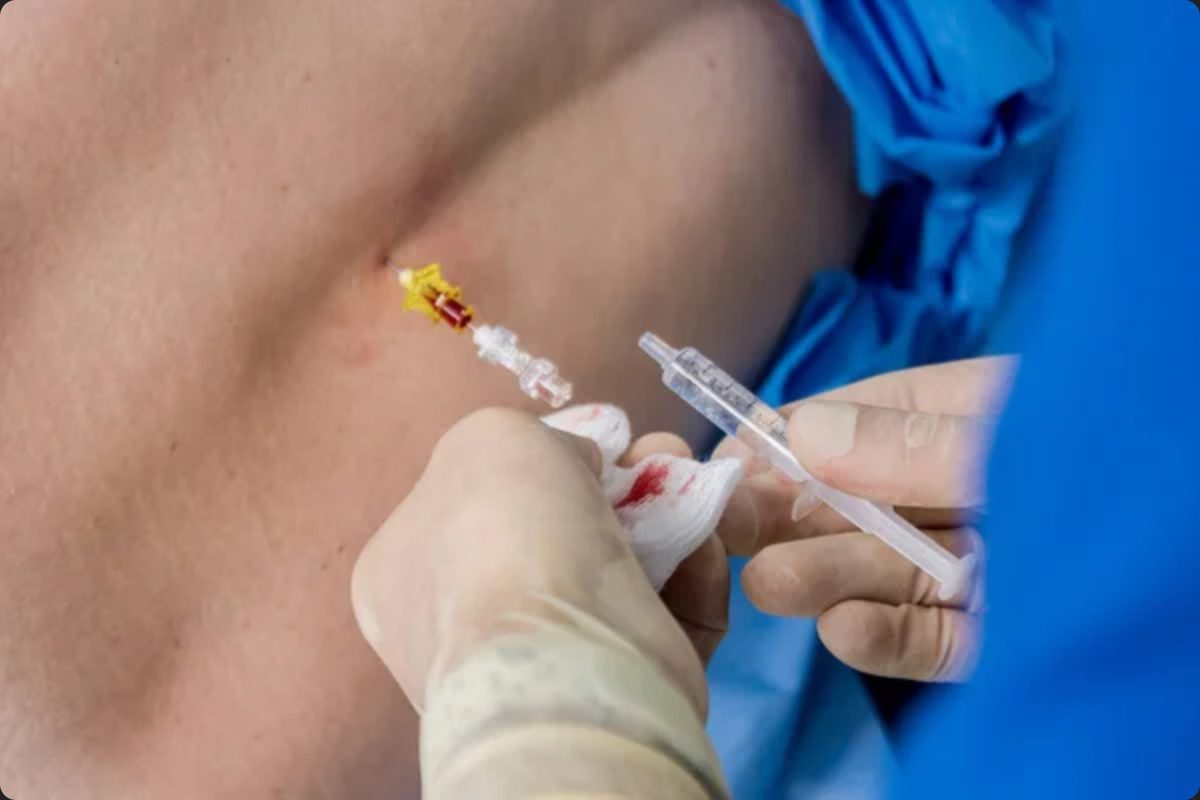
Targets inflammation at the source

Reduces pain in the back, neck, arms, or legs

May result in quick, lasting relief

Improves mobility and daily function

May delay or prevent the need for surgery
Real Stories.
Real Relief.
Real Relief.
Hear from Patients Who Chose Midsouth Pain Treatment Center
500+ 5 Star Reviews
Rated 4.9 by Our Patients
Is an Injection
Right for You?
Right for You?
Injections are often recommended for patients who haven’t found relief through conservative treatments like medication or physical therapy. During your consultation at Midsouth Pain Treatment Center, our board-certified pain management specialists will determine if this treatment is appropriate for your condition and goals.
Fill out the form and a care coordinator will contact you to schedule your consultation.
Contact Us
Trust Midsouth Pain Treatment Center
for Expert Care
for Expert Care
At Midsouth Pain Treatment Center, our experienced team specializes in treating spine and nerve-related pain using the latest minimally invasive techniques. We’re committed to delivering compassionate, high-quality care close to home with convenient locations in Cordova, TN, Jackson, TN, Oxford, MS, Tupelo, MS, Southaven, MS, and Germantown, TN.

